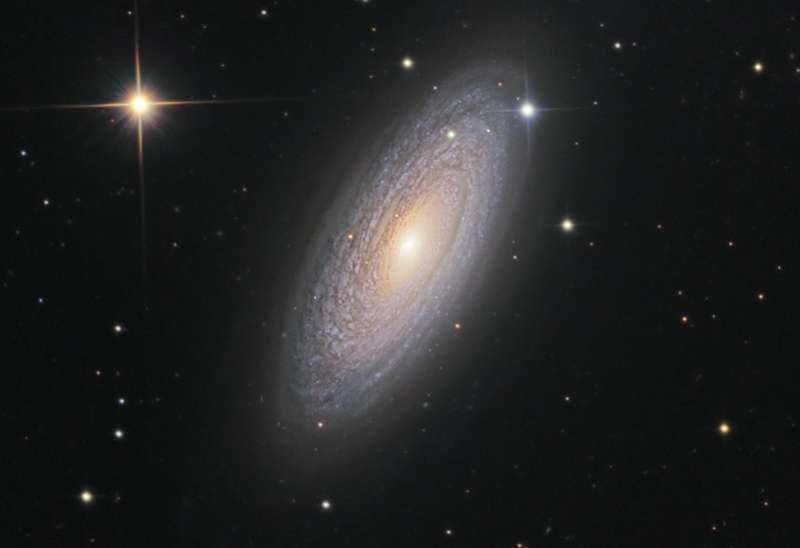
|
Credit & Copyright: Johannes Schedler
(Panther Observatory)
Explanation:
Some 50 million light-years distant, spiral galaxy NGC 2841
can be found in the northern constellation of
Ursa Major.
This sharp view of the
gorgeous island universe
shows off a striking yellow nucleus and galactic disk with tightly
wound
spiral arms.
NGC 2841 has a diameter of over 150,000 light-years, even larger than
our own
Milky Way Galaxy.
The galaxy's dust lanes and turbulent star-forming regions are found
along the spiral arms, but
X-ray images
suggest that resulting winds and stellar explosions create
plumes of hot gas extending into a halo around NGC 2841.
Of course, the prominent stars with a
spiky appearance in
the picture are close foreground objects within the Milky Way
and not associated with
NGC 2841.
|
January February March April May June July August September October November December |
| |||||||||||||||||||||||||||||||||||||||||||||||||||||||
NASA Web Site Statements, Warnings, and Disclaimers
NASA Official: Jay Norris. Specific rights apply.
A service of: LHEA at NASA / GSFC
& Michigan Tech. U.
Based on Astronomy Picture
Of the Day
Publications with keywords: spiral galaxy - spiral arms
Publications with words: spiral galaxy - spiral arms
See also:
- Portrait of NGC 1055
- APOD: 2025 September 4 Á NGC 4565: Galaxy on Edge
- APOD: 2025 August 22 Á A Tale of Two Nebulae
- APOD: 2025 August 19 Á Giant Galaxies in Pavo
- APOD: 2025 August 18 Á NGC 1309: A Useful Spiral Galaxy
- APOD: 2025 July 4 Á NGC 6946 and NGC 6939
- APOD: 2025 June 30 Á NGC 4651: The Umbrella Galaxy
